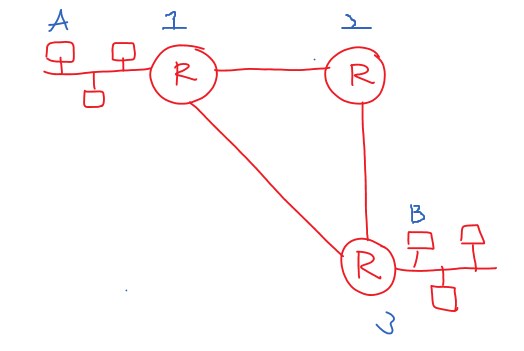Time To Live TTL Field in IPv4
For Complete YouTube Video: Click Here
We will try to understand Time To Live TTL Field in IPv4 in this class.
TTL is the field in the 3rd row of the IPv4 header.
We have already discussed the other fields of IPv4 in our previous classes.
Time To Live TTL Field in IPv4
To understand this concept, we will consider the image below.

In the transmission of the packet from source to destination, we have a problem called routing loops.
What is a routing loop?
In the above diagram, A wants to communicate with B.
Generally, the packets will take the shortest path.
The shortest path between A and B is from the above network: router one to router two and router two to router three.
Now assume that the link between the routers two and three have been broken.
Routers two and three will immediately know the broken ink information, but router one will not know.
At router two now, the shortest path from two to three is through one.
Similarly, the shortest path from one to three is through two.
The routing information will cause a loop between one and two, and the packets will stay in the loop for an infinite amount of time.
We can avoid the problem of routing loops by TTL field in the IPv4.
Time-to-live TTL is a value for the period of time that a packet, should exist on a network before being discarded.
The TTL field will have a hop count value.
Hop count means the number of nodes the packet should cross before reaching the destination.
On reaching each node, the routes will decrement the value of TTL.
As the TTL value reaches zero before reaching the destination, the packet will get discarded, and an ICMP request will be sent to the source.
Now the source will increase the hop count and retransmit the packet.
